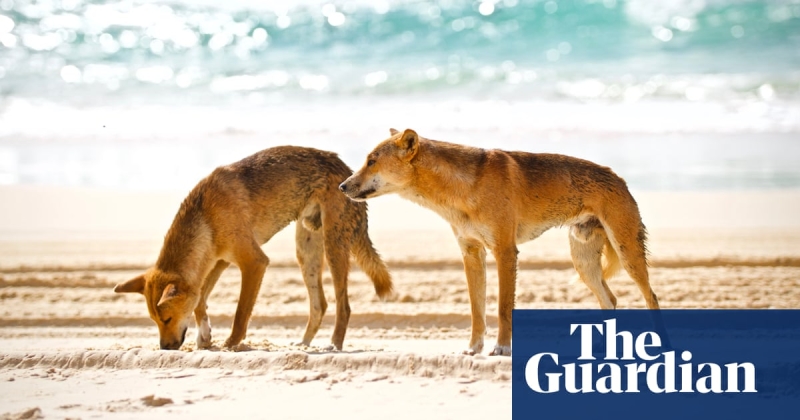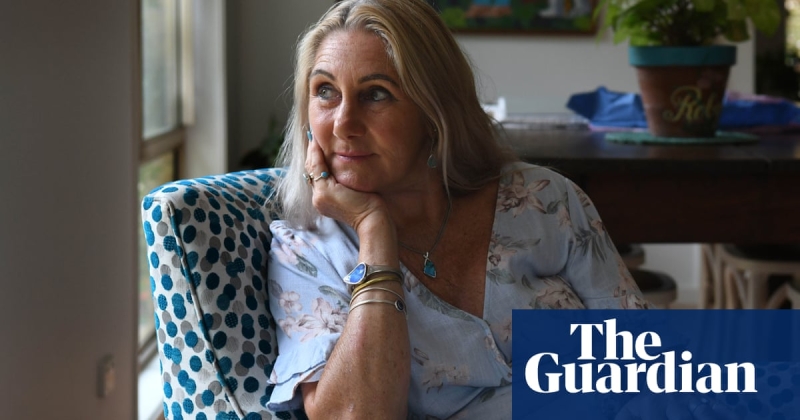Four people, including a toddler, have been attacked on the island in recent weeks and there’s still no plan to tackle the issue
Four people were reportedly attacked by dingoes in separate encounters on the same Australian island in recent weeks – including a toddler who was flown to hospital after being bitten on the leg.
And this is just the latest spate of violent dingo-human interactions on the popular tourist island of K’gari, which last year saw a pack of three rush and bite a woman who was jogging along a beach, saw a dingo shot and killed with a spear gun and several others put down after attacking people.
David Crisafulli’s government has announced it will scrap the previous government’s move to cap visitor numbers during peak periods, a plan designed to help ease human interaction with the animals.
So what happens now?
K’gari is an island off the southern coast of Queensland, which is world heritage-listed for its breathtaking beauty.
Stretching 123km and covering more than 166,000ha, it is the largest sand island in the world – its complex and evolving dune system reach up to 240 metres high and nurture pristine fresh water lakes and creeks and towering stands of subtropical rainforest.
Its endless white beaches and coloured sand cliffs look stunning on postcards – or posted on Instagram.
K’gari is separated from the mainland by a narrow strait, with its northernmost tip offshore from Bundaberg and its southernmost a short ferry ride from Inskip Point, north of Noosa.
Formerly known as Fraser Island, it has been home to Butchulla people for tens of thousands of years – they were officially recognised by the state as traditional owners in 2014. The name Fraser Island was officially changed to K’gari in 2023.
“It’s a very special place, culturally and environmentally,” the Butchulla Aboriginal Corporation secretary, Christine Royan, says. “For Butchulla people, it’s our home”.
Royan says the wongari, or dingoes, are “sacred” for Butchulla. Somewhere in the order of 200 of the wild canines are believed to roam the dunes and beaches of K’gari. Their lean and distinctive figures have become synonymous with the sand island – many once believed they were among the last pure dingoes left, with their cousins on the mainland interbred with feral dogs and hunted to extinction.
“So that myth is not true,” Dr Kylie Cairns says.
A molecular biologist, Cairns led a recent genetic analysis that found most dingoes in Australia are pure dingoes rather than hybrids – yet the sand island’s wongari are unique, she says.
“Though we do know that dingoes on K’gari are different from the dingoes on the mainland,” Cairns says. “Whether that’s because they’ve been on the island for such long periods of time and have adapted to it, or whether it’s the result of a long period of isolation and inbreeding … they are genetically distinct.
“They also look characteristically different, that may be because they’re living in an island tropical environment, but they do have quite a distinctive look.”
It turns out that distinctive appearance may be part of the reason humans and dingoes are running afoul. Because, in their quest to get photos of and selfies with the sleek and tan wongari, some tourists feed and encourage the wild animals to come close – habituating them to human contact and creating an association with food.
“When people go to K’gari, they want to see wongari,” Royan says. “So they get up close”.
That link to a quick and easy feed is made stronger by the fact some campers don’t properly secure their food, some anglers leave bait unattended on the beach and some picnickers have food out in the open. It is also one that dingoes on the mainland have made with some mine sites, Cairns says. But in the outback, for example, dingo populations are widely distributed, and visitors scattered across a vast landmass.
The government estimates about 500,000 people visit K’gari each year – Royan reckons it is closer to 800,000.
“The sheer number of people visiting that very small island is therefore forcing that interaction with dingoes at a level that you just don’t see on the mainland,” Cairns says.
Both the scientist and traditional owner also talk about a lack of knowledge or willingness on how to behave around potentially dangerous, wild animals. For all its reputation for deadly animals, Australia doesn’t have any other land-based hunters of a size to worry humans. And so, Royan says, visitors to K’gari continue to approach and feed the apex predators.
“Would you do that to a lion if you went to Africa?”
The previous Labor state government had backed a plan to manage the situation on K’gari which would have included a cap on vehicles on the island on the 20 busiest days of the year to reduce overcrowding. But the current LNP government has ruled out such a cap – and the tourism and environment department says it is working on a new management plan.
Griffith University economics professor and tourism expert Christopher Fleming says they can and must.
“I don’t think there’s any appetite to remove the dingoes – and there’s certainly no appetite to stop all tourism on K’gari,” he says.
Like Royan and Cairns, he backs a tourist cap as part of a wider plan to protect K’gari.
Because, for Fleming, the “dingo issue” is totemic of a broader conflict.
“This conflict between different user groups, it’s not new for the island at all,” he says. “The original conflict was between Indigenous people and European settlers, then we had the whole sand mining and forestry versus conservation and now it’s tourism versus conservation.
“It’s also an issue of the impacts we’re having on the ecological side of the island, with the number of visitors we have and also the impact that’s having on the visitor experience”.
And Fleming reckons that last point might be key to achieving the kind of compromises needed to find a way through the conflict.
About 15 years ago he did a PhD on what was then called Fraser Island around these very issues. Back then, Fleming found visitors were “actually quite supportive” of tourist restrictions and caps – particularly if they could be linked to better conservation outcomes and a better visitor experience.
“So, I think, the public are more accepting of potential management interventions, like visitor caps, than perhaps the managers and the politicians give us credit,” he says.
In the meantime, though, visitors to K’gari can take it upon themselves to help avoid getting into trouble with wongari.
“You are going to an island which has wild animals,” Fleming says. “So behave accordingly”.





